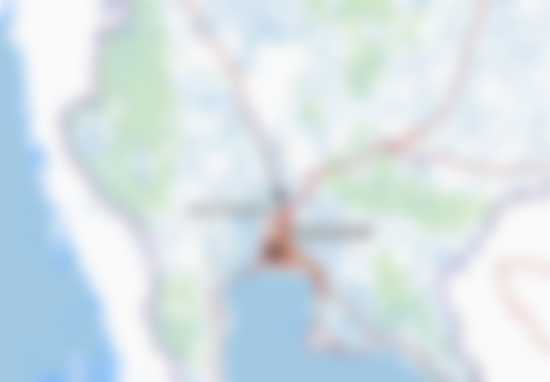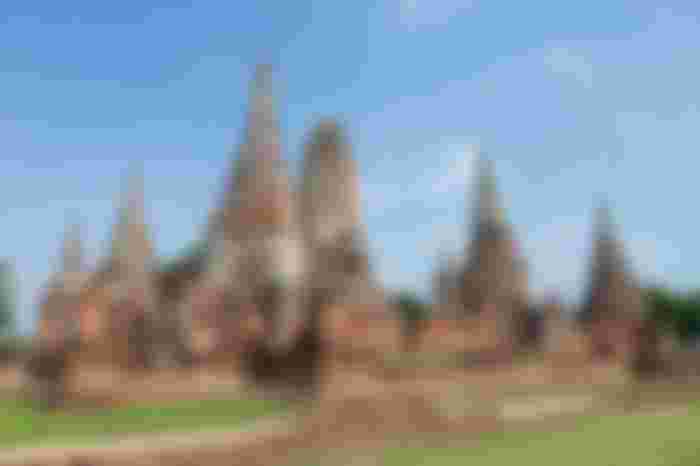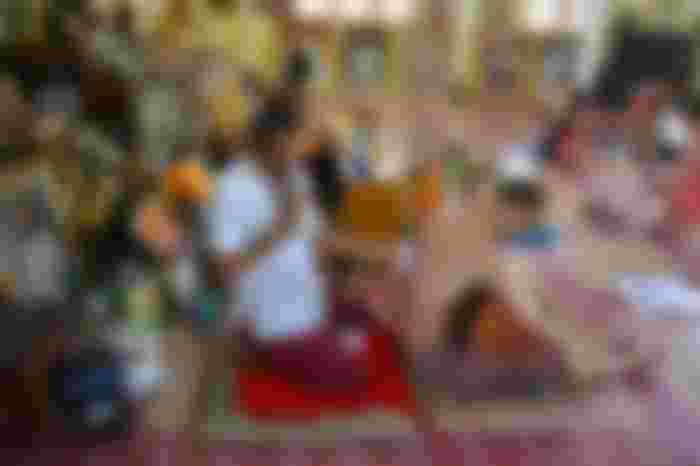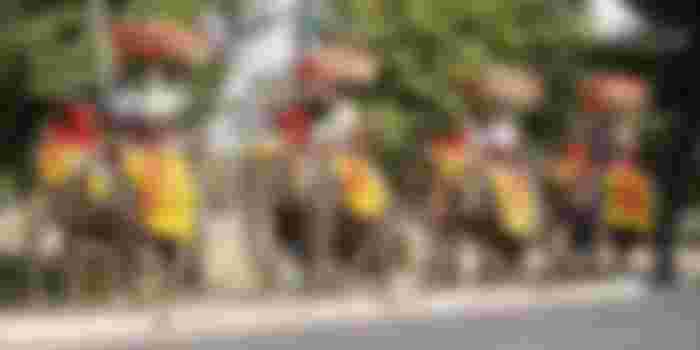When it comes to touring Thailand, the first thing that comes to the minds of tourists is Bangkok, the capital. After that, most of the tourists flock to Sukhothai to see the different ancient and destroyed temples and monuments. Ayutthaya is another ancient city located just 70 kilometers from Bangkok. Despite its remarkable history and monuments, the city is largely neglected. Again, many do not know much about it. However, in 1991, UNESCO declared the old city a World Heritage Site and began pressuring the government to save the endangered city.

The historic city of Ayutthaya was founded in 1350, the second capital of the Siamese kingdom. The city flourished during the 14th to 18th centuries. And at one time it became the largest and most secular urban area in the world. Ayutthaya is also known as the center of world trade and diplomacy. It was surrounded on one side by the Great Chao Phraya River, on the east by the Pasak River, and on the north by a canal. This is an ideal defensive position. Naturally, because of this location, the inhabitants of Ayutthaya are able to protect themselves from foreign invasions, as well as to trade. This was the reason behind making it the capital even during the Siamese period. Moreover, at that time the city was located above the Gulf of Siam, so there was less chance of a natural disaster. But now there are frequent floods, which are also hurting the city's economy.
The city was equally far from India and China in the Gulf of Siam. Besides, they were at a safe distance from the attacks of Arabs and Europeans. Moreover, the sea route from there to Ayutthaya was reversed or unfavorable for them. In the 16th century, Ayutthaya began to develop economic relations with China, Japan, Portugal, the Netherlands, and Britain. Paddy cultivation was very good in the fertile lands of Thailand. That is why other countries started importing rice from Ayutthaya and Thailand. On the one hand, due to the appropriate geographical location and on the other hand, due to the improvement in business, Ayutthaya, that is, Thailand, lost the dominance that was lost due to the fall of the anchor.
The money earned by the inhabitants from this business was used to build palaces and temples. All in all, this old city was becoming quite prosperous economically, diplomatically and dominantly.
But Ayutthaya's misfortune began in 1767, when they became embroiled in a war with neighboring Burma (now Myanmar). At one point in the war, the Burmese army attacked and destroyed the city. They burned and destroyed the whole of Ayutthaya and forcibly evicted the inhabitants from the city. The temples and palaces that have been built with so much effort year after year are soon destroyed. The city was later rebuilt. At present this place is known only as a vast archeological area.

The current location of Ayutthaya is in Fra Nakhon C Ayutthaya district. The World Heritage Site covers an area of 1.115 square miles. The ruined area now contains some monumental towers, a few pillars of a Buddhist temple and the rest of the ruins, giving an idea of the city's former size and architecture.
Tim Curtis, head of UNESCO's culture department in Bangkok, said of the city:
It (Ayutthaya) was a multinational city. Because traders from different countries also lived here. The canals of the city could be used to travel from one place to another very quickly. By the 18th century, it was one of the largest cities in the world, about the size of Paris.
According to him, the historic temples of the city not only honored the kings of that time, but also enhanced the respect of the whole community. Because, it is possible to build these with the joint efforts of all. However, as the Thai government is not paying attention to the preservation of the ancient city, UNESCO is trying to discuss the matter with the state. If Ayutthaya can be preserved, it will definitely become an asset. Moreover, the fact that the whole city is full of canals and beels will serve as a positive thing. Curtis said.
We want to see a different connection between the old and the modern city. Another ‘Water City’ Venice could serve as a good example in this regard.
Ayutthaya has some unique features that make it attractive compared to other cities in Thailand.
Boat Museum
Ayutthaya still retains the traditional handicraft culture of Thailand. Samples of it can be found at the Boat Museum, where Kanak Khaomala and his father, Python, still hold the traditional old-fashioned watercraft, the wooden boat, as an example of Thai handicrafts. Khawlama took the responsibility of establishing this museum in order to preserve such an ancient technique of boat building. He started this work after retiring from the teaching profession. This boat-making technique is on the verge of extinction today due to the decline of tropical wood trees in Thailand.

Although the Khaolama Museum is small, it is quite tidy. In addition to wooden boats, there are giant and various types of excellent royal warships. It takes about a year to build each warship.
Sack Yant
Another attraction of this old town is the Sac Yant, which means sacred tattoo or design. And for that you have to go to the Azarn Cob shop in the north-west of the city. Azarn is a very skilled person in drawing these tattoos. Thais draw different types of tattoos on their bodies from age to age. They believe that these ancient tattoos will protect them from danger.

Earlier in Ayutthaya, the soldiers of the army of the Thai emperors never got these tattoos in war. According to Cobb, teaching these intricate tattoos is not enough. To draw an ideal sac yant, an artist must also transmit mysterious sacred energy. Sack Yant is not actually part of Buddhism. As Buddhism spread to Asia and other parts of the world, it came into contact with different cultures. Similarly, Sak Yant was a part of the old tradition in Thailand, which did not disappear even after the introduction of Buddhism in Thailand. The idea is that this sacred tattoo is a part of the shamanistic tradition.
The use of elephants
When the power of the emperors in the city of Ayutthaya peaked, they began to feed about a thousand elephants. These elephants were used to lift heavy objects or to move goods from one place to another. Moreover, the elephants were trained in such a way that they were able to attack the enemy on the battlefield. In the modern era, the use of elephants in war is not a matter of travel. However, it is mainly used for entertainment. Because modern vehicles are also in this city. Many still keep elephants, mainly for tourists.

Unplanned modernization has resulted in unplanned urbanization and traffic congestion in traditional Ayutthaya. However, its economic changes have further improved the living standards of its residents. The city currently has more than 2,000 factories, employing about 200,000 workers. Honda Company is running one of these factories. It is the sixth largest branch of the company in terms of car production.

About three lakh cars are produced here every year. According to Honda's vice president, the quality of the cars manufactured at the Ayutthaya factory is equivalent to the quality of Honda cars made in Japan. So the demand for Ayutthaya Honda cars is also high. However, the rest of the companies, including Honda, had to suffer due to the severe floods last year. The government is constructing a 6-kilometer-high wall around the entire city to prevent such dangers and economic losses in the future. And some other companies including Honda are supervising this work for their own interest. However, the government should take appropriate measures to preserve the culture and monuments of the old city. Moreover, if Ayutthaya is preserved, more tourists will come to the city, which will definitely have an impact on its economic development.
Thanks for reading this article for so long.
If you like it Upvote Can give.






Ayutthaya is a city in Thailand, about 80 kilometers north of Bangkok. It was capital of the Kingdom of Siam, and a prosperous international trading port, from 1350 until razed by the Burmese in 1767.